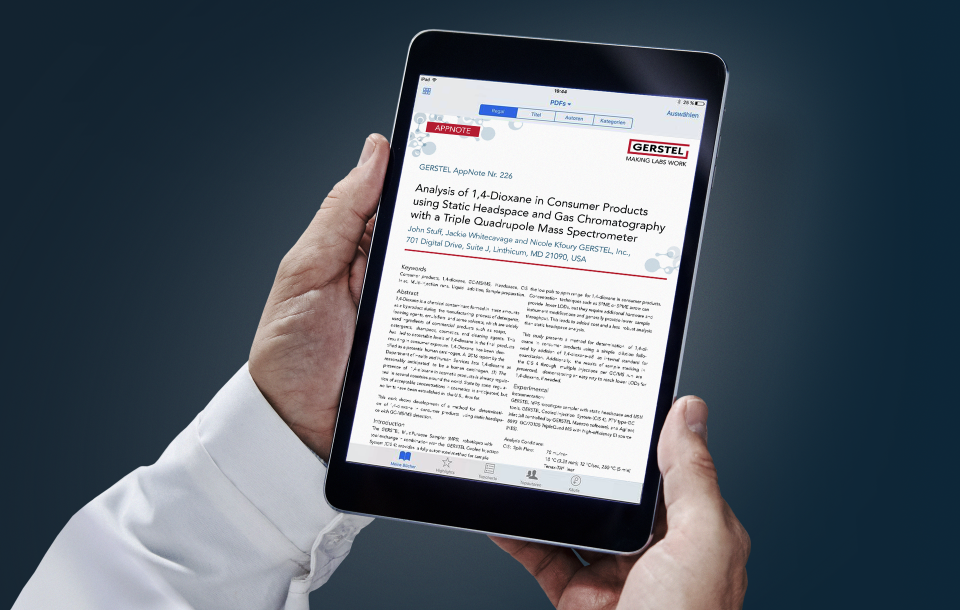In this study, a method was developed for quantitative determination of seven phenolic compounds in scotch whisky. Two different whisky brands were analyzed by Stir Bar Sorptive Extraction (SBSE), based on novel EG-Silicone Twisters, combined with thermal desorption-gas chromatography-mass spectrometry (TDGC- MS). Direct Large Volume Injection (LVI) -GC-MS was used as reference method. Optimized methods for LVI-GC-MS and SBSETD- GC-MS analysis were used for quantitative determination of the target compounds: phenol, o-,m-, and p-cresol, guaiacol, 4-ethylguaiacol, and 4-ethylphenol. Both methods were evaluated regarding linearity of calibration, reproducibility, and limits of detection (LOD), or limits of quantification (LOQ), for the target compounds. These values were calculated for pure whisky (40 % v/v, ethanol/water). Target compound LODs for the SBSE-TD-GCMS method range from 1.2 ng/mL (guaiacol) to 6.9 ng/mL (4-ethylguaiacol) based on extraction of 5 mL ethanol/water sample.
LODs of LVI-GC-MS range from 90 ng/mL (phenol) to 210 ng/mL (4-ethylguaiacol) based on injection of 20 μL ethanol/water sample. Coefficients of determination (R²) for the calibration curves were found to be higher than 0.999 for the SBSE-based method and between 0.991 and 0.999 for the LVI method. Recoveries of phenolic compounds in ethanol/water matrix using the EG-Silicone Twister were calculated to be between 12.2 % (guaiacol) and 56.8 % (4-ethylguaiacol) with relative standard deviations from 4.2 % to 8.9 %. Comparable quantitative results were achieved using SBSE and LVI to determine concentrations of target compounds in two different whisky brands. Relative standard deviations ranged from 0.8 to 5.4 % for SBSE and 1.6 to 6.2 % for LVI. For GC separation a fast narrow-bore column FFAP was chosen. An MS deconvolution software (IFD™ mass spectral deconvolution algorithms) was applied for quantification of coeluting analytes and analytes masked by matrix.
